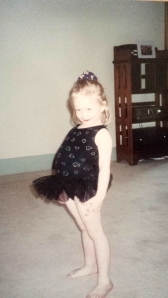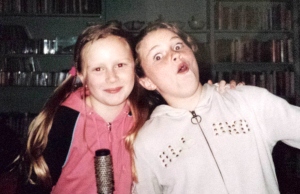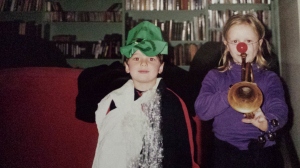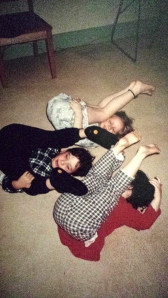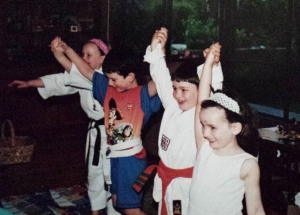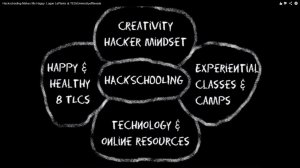Last night I uploaded a new profile picture to Facebook.

The Likes I received were incredible/ridiculous/many. Every time I checked my phone, the Likes had increased. I went out to yoga, put my phone on silent, and by the time I came home an hour and a half later, the number had skyrocketed further, still. As I write, I’m on 209 Likes and 23 extremely generous and complimentary comments. That’s a Like Record for me, the most I’ve had on anything I’ve posted over my five plus years on the social media platform.
So, I’m thinking, ‘Wow, this is great! People think I’m attractive, people like what I’m wearing, my smile, the composition of the photo, or a combination of all of the above’. It made me feel good, I felt (no pun intended), Liked. I felt more worthy than I had a few hours before, I felt more accepted and somehow, more legitimate, as a valuable, equal member of my peer group, of society, if I can to take it to that extent.
Here’s the problem: I recently had a professional photo shoot at a professional photography studio. I had my hair and make-up done by an ‘artist’, was shot by a professional photographer, and the team used ‘props’ like a fan to blow my hair around, made lighting and furniture adjustments, and positioned me in ways they thought complementary to my figure/features/whatever. Essentially, they directed me into looking ‘good’. The photographer said she had all the knowledge and experience needed to produce the most flattering shots and I was (and still am) grateful for her keeping to her promise.
But, how do I know she succeeded?
Because one of those photographs is the one I made my profile picture less than 24 hours ago. That same one with the most Likes, kind comments and good feelings that have come as a result of the finished product.
Oh, there’s another Like. 210, now.
So, here’s the thing. What does it say about me that this course of events and tiny clicks, minute actions by others, granted, by you, that have led me to feel a significantly increased my self-esteem over a short period of time? How else could I have achieved this sense of okay-ness on my own? Am I so dependent on others that I am unable to pick myself up?
And, perhaps, what does it say about you? Is this a situation you’ve too, been in?
What lesson does it teach me, or us, about our society? About praise, about dependence, about the relationship between looking good and feeling good?
Instant gratification. Social media provides me – and I suspect most of my generation if not everyone active across the various platforms – with comments, Likes, Followers, that give me a sense of achievement. For that second that I’ve got someone else’s attention, I’ve been thought of, considered, mentioned.
Truth is, my presence in your mind probably is only momentary, fleeting if anything was. You’ve no doubt now scrolled down your newsfeed and Liked three other Friends photos, status’ or Shares. But in our fast-moving world, that moment I was present with you is as significant as I can ask for.
But, here’s the thing. Is that person in that picture you Liked actually me? I mean sure, it’s me – the image captures my hair, my face, my favourite clothes, my ring, my posture. But, I’ve been manipulated. Edited. Touched up.
Granted, it wasn’t actually touched up a whole lot. If I had a copy of the original, organic, un-Photoshoped photo, I’d post it here for you to make that judgement yourself. I saw it before editing though, and I’d say they only smoothed out a few blemishes or whatever they deemed to be imperfections on my face or something.
But, what about all these pre-production adjustments? I spent a good 20 minutes getting my hair and make-up perfected before they even considered taking me into the proper studio (for lack of a better word) part of the ‘studio’. Yes, they opted for a fairly natural look (upon request), and they let me bring my own clothes. So, I suppose the final photograph could be considered a fairly realistic representation of who I am. But, what is troubling is knowing that had I uploaded this picture (see below) instead, I’d probably be sitting on a solid, oh, five Likes, if I’m lucky. And they’d most likely be from my nearest and dearest who fit the ‘take me as I am’ brief.

We’re constantly being bombarded by Photoshopped images of celebrities, by messages of the ‘ideal’ body type, skin colour, hairstyle. We’re told, heck, dictated to, what’s ‘hot’, what’s ‘in’, asked ‘who wore it better’, shown so-and-so’s ‘biggest blunder’.
To be honest, it’s all fucked.
And I can only say this because I play into this culture of externally-identified ideals of perfection and sources of assurance. I’m a victim and an offender but it’s perpetual, it’s enthralling, it’s insane.
We, as a society, have an addiction to judgement. We draw conclusions from un-evidenced or unsubstantiated data. We take thing at face value and buy into advertising, media reporting and gossip without stopping to consider our deeper values or attitudes.
Even when just taking that photo above on my computer’s Photo Booth, I took a couple. I wanted to look my best ‘in a bad situation’ (read; day at home, no make-up, dirty hair). Side note: omfg the temptation to edit that picture was enormous.
But, why is this? I’m not saying we don’t have the right to want to feel beautiful, to feel accepted and to want to be happy. Naturally, that’s an inherent aspect of building one’s self-esteem, something no one should be denied. It’s something principally deeper than that.
It’s more about how we source that emotion, and questioning why we value certain ‘sources’ over others.
And, it’s also about how much we rely on social media for quantified assurance and positive reinforcement.
211 Likes.
I don’t want to play the blame game anymore than I have, nor do I believe this culture has come about as a consequence of a single event/person/aspiration. It’s a process, it’s constantly evolving. And no one is immune (J-Law, case in point).
212 Likes.
I’m not anti-make-up, anti-media, or even anti-Photoshop.
But, if I – or you – can’t upload any picture of ourselves in equal self-confidence, and are dependent on external input to confirm or trash our mood and opinion of ourselves, I think there’s at least something to think about.

